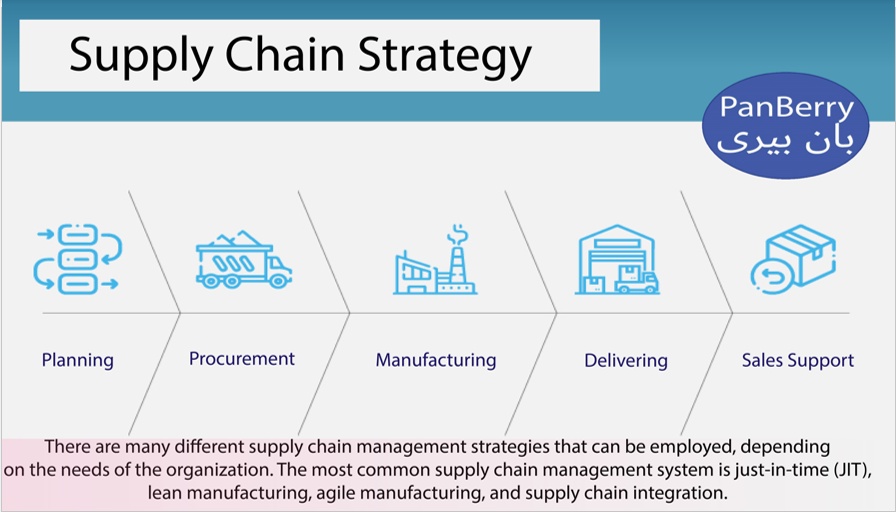Our Services

- Backward integration is the type of vertical integration in which companies acquire or merge or bind with a supplier in their value chain for raw materials or services used to produce their final product or services.
- Backward integration works through process of evaluating market opportunities to bind with a supplier used to produce / supply our raw materials.
- PanBerry completes an MOA transaction when the benefits of backward integration are justified and financially feasible.
- When making backward integration decisions, PanBerry evaluates the advantages and disadvantages (including riskiness of low/excess supply).
- Better control on supply chain which contribute in business expansion.
- Securing a supply of all necessary raw materials.
- Reducing costs through economies of scale.
- Eliminating operation inefficiencies.
- Gaining market-competitive advantage and differentiation.
- Offering just-in-time (JIT) operation to our clients.
- Enhancing product availability, hence customer satisfaction.
- Identify specific goals and objectives for the R&D initiative.
- Examples:
- Develop new product’s flavors and variations to meet evolving consumer preferences.
- Improve existing recipes for enhanced taste, texture, and shelf life.
- Explore innovative baking techniques and ingredients for differentiation and innovation.
- Conduct market research to identify emerging trends, consumer preferences, and competitive landscape in the bakery industry.
- Analyze consumer demographics, purchasing behavior, and demand for cake products.
- Identify niche markets and opportunities for product differentiation and innovation.
- Formulate a detailed plan for developing new products and improving existing ones.
- Establish a cross-functional R&D team comprising pastry chefs, food scientists, and product developers.
- Conduct recipe development, taste testing, and sensory evaluation to ensure product quality and consumer appeal.
- Experiment with different flavors, ingredients, and baking techniques to create unique and innovative cake offerings.
- Implement rigorous quality control measures throughout the R&D process.
- Establish quality standards and specifications for ingredients, production processes, and finished products.
- Conduct regular testing and evaluation to ensure compliance with food safety regulations and industry standards.
- Solicit feedback from consumers, industry experts, and internal stakeholders to continuously improve product quality.
- Explore advancements in baking technology, equipment, and processes to enhance efficiency and product quality.
- Collaborate with suppliers, research institutions, and industry partners to leverage cutting-edge technologies and ingredients.
- Invest in research areas such as alternative sweeteners, gluten-free options, and sustainable packaging solutions to address consumer preferences and environmental concerns.
- Evaluate the potential for patenting unique recipes, formulations, or processes developed through R&D efforts.
- Work with legal experts to secure intellectual property rights and defend against infringement.
- Leverage intellectual property assets to gain a competitive advantage and protect market share.
- Develop a realistic timeline for executing the R&D plan, including key milestones and deliverables.
- Allocate resources and budget for personnel, equipment, ingredients, and research activities.
- Monitor progress regularly and adjust plans as needed to ensure timely completion and adherence to budgetary constraints.
- Foster collaboration with external partners, including suppliers, research institutions, and industry associations.
- Participate in industry events, conferences, and trade shows to showcase R&D achievements and network with potential collaborators.
- Seek opportunities for joint research projects, co-branding initiatives, and strategic alliances to accelerate innovation and market penetration.
- Summarize the key findings and recommendations of the R&D plan.
- Reinforce the company's commitment to innovation, quality, and customer satisfaction.
- Outline next steps for implementation and ongoing evaluation of R&D initiatives.
- Private labeling allows brands to outsource products manufactured at a third party.
- With private labeling, PanBerry applies the brand to the packaging only when it is time to sell the product. It is common in today’s shopping environment.
- Private labeling provides clients with a powerful tool to enhance their product offerings, build customer loyalty, and improve profitability.
- By leveraging the advantages of private labeling, businesses can create exclusive, high-quality products that meet consumer demands and differentiate themselves in a competitive marketplace.
- Private label clients source locally manufactured brand to replace imported brands.
